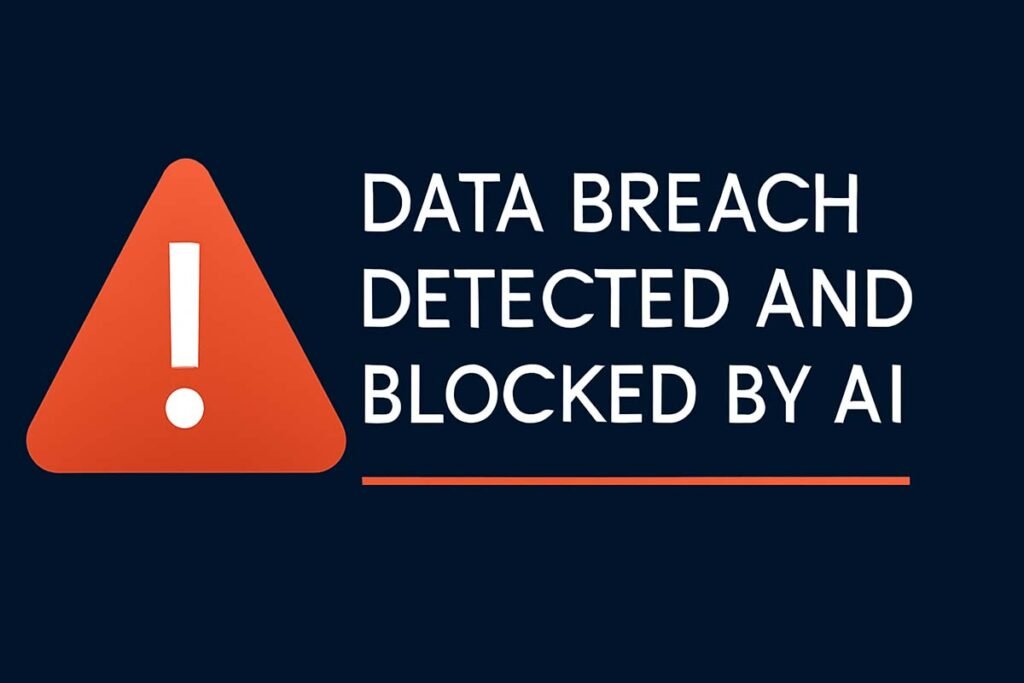In our connected digital world, online safety isn’t just a luxury—it’s a necessity. Cyber-attacks, data breaches, and privacy invasions have surged across the United States, affecting millions of people every year. With symptoms ranging from identity theft to ransomware attacks, staying protected online can seem daunting.
Fortunately, artificial intelligence (AI) has emerged as a powerful ally in the cybersecurity fight. AI-driven tools can detect threats faster than humans, predict vulnerabilities, and shield your personal data with unprecedented precision. In this detailed guide, we’ll explore the best AI cybersecurity and privacy tools, how they work, real-life case studies, and practical advice tailored for American users navigating 2025’s complex digital landscape.
Whether you’re a busy professional, student, or everyday web surfer, learning to harness AI’s power will empower you to stay one step ahead of cybercriminals.
The Growing Importance of AI in Cybersecurity
Cybercrime costs the US economy over $10 billion annually (FBI 2025 report), with small businesses and individuals increasingly targeted. Human defenders alone struggle to keep pace with rapid, sophisticated attacks. AI dramatically improves detection and response, analyzing massive data in real time and adapting to evolving threats.
Recent AI breakthroughs enable proactive defense: spotting novel phishing scams, identifying malware mutations, and anticipating attack vectors before damage occurs. The integration of AI is revolutionizing both consumer protection and enterprise security.
Understanding Common Cyber Threats in 2025
Phishing & Social Engineering
- Fraudulent attempts to trick people into revealing sensitive info.
- AI-generated deepfake emails or calls increase believability.
Ransomware & Malware
- Malicious software locking files until paid.
- AI-powered malware evades traditional antivirus.
Identity Theft & Data Breaches
- Unauthorized access to personal or financial info.
- Social media and online accounts are frequent targets.
IoT Vulnerabilities
- Smart devices in US homes (thermostats, cameras) can be hacked.
- Many lack built-in security; AI protects by monitoring anomalies.
How AI Helps Protect You Online
Threat Detection & Prevention
AI systems scan for unusual patterns using machine learning, then alert or automatically block threats before reaching you.
- Example: AI email filters detect and quarantine phishing faster than rule-based spam filters.
Behavioral Analytics
AI profiles user behavior—like login times and spending patterns—to flag suspicious activity unique to your digital “signature.”
- Banks use this to prevent fraudulent transactions in real-time.
Automated Incident Response
When threats are detected, AI can initiate isolation, password resets, or forensic analysis, minimizing manual delay.
Top AI Cybersecurity Tools for Consumers
AI-Powered Antivirus and Anti-Malware
- SentinelOne: Uses AI to detect unknown threats and rollback ransomware damage.
- Sophos Home: Predicts and blocks malware with AI-driven behavioral detection.
- Norton 360: AI secures devices against malware and exploits multiple layers of attack vectors.
AI-Based Password Managers
- Dashlane: AI generates strong passwords, detects breaches, and alerts users.
- LastPass: Uses AI to improve password strength and auto-fills with phishing protection.
- 1Password: Incorporates AI to flag weak or repeated passwords.
AI Privacy Protection Apps
- Jumbo Privacy: AI analyzes app permissions, recommends settings to limit tracking.
- Pryzelite: Monitors data exposures and suggests remedial action.
AI VPNs and Encrypted Browsers
- ExpressVPN: AI optimizes server connections for speed and security.
- Brave Browser: Combines AI blocking ads, phishing, and trackers by default.
- NordVPN: AI-enhanced threat prevention and threat intelligence integration.
Bullet Points: Why Use Multiple AI Tools?
- Layered defense boosts overall security.
- Each tool specializes—password safety, malware detection, or privacy control.
- Automated alerts mean you stay one step ahead with minimal effort.
AI Tools for Businesses Protecting Customer Data
Businesses handle growing regulatory scrutiny — HIPAA for health data, CCPA for California consumer privacy. AI tools help:
- Darktrace: Uses AI for self-learning cyber defense across networks.
- CrowdStrike: Endpoint protection with AI-driven threat hunting.
- Cisco SecureX: Integrates AI across security layers to unify response.
Case examples include US banks preventing fraud losses and healthcare providers avoiding data breaches through AI-powered monitoring.
Real-Life Examples and Case Studies
Case Study: Ransomware Prevention at Texas SME
Using SentinelOne, a small Texas tech firm blocked a major ransomware attack before files were encrypted, saving over $150K in recovery and downtime.
Example: Personal Password Safety in California
Emma, a freelancer in San Francisco, adopted Dashlane following a social media hack. AI alerts and password generation restored her security within hours.
Corporate Success: AI-Powered Unified Security at Chicago Healthcare Provider
Automated AI detection prevented multiple phishing attempts and unauthorized access, ensuring HIPAA compliance—winning patient trust and avoiding fines.
Benefits of Using AI for Cybersecurity
- Faster Threat Detection: AI spots attacks minutes earlier than traditional methods.
- 24/7 Protection: AI never sleeps, offering continuous shield.
- Cost Savings: Reduces need for large security teams.
- User-Friendly: Many apps require no tech skills, democratizing protection.
- Customizable: Adjust levels of alerts or automation per comfort.
Drawbacks & Potential Risks of AI Cybersecurity
- False Positives: AI might flag benign actions, requiring manual review.
- Dependence on Data: Poor training data can limit effectiveness.
- Privacy Concerns: AI tools must balance data usage and user privacy.
- Sophisticated Attacks: Some hackers use AI themselves to evade detection.
Tip: Combine AI with traditional vigilance—regularly update passwords and software manually.
Expert Opinions & Industry Insights
“AI is revolutionizing cybersecurity but must be deployed with transparency and human oversight to avoid automation pitfalls.”
— Kimberly Bryant, Cybersecurity Strategist, Palo Alto Networks
“The key to effective AI security tools is their ability to continuously learn from evolving threats.”
— Jason Lee, CSO, CrowdStrike
Tips to Maximize Your Online Safety with AI Tools
- Use multi-layered AI tools tailored to your online activity.
- Regularly update and audit your devices.
- Train yourself on phishing and social engineering trends.
- Enable two-factor authentication universally.
- Stay informed via US government cyber alerts (e.g., CISA).
Future-Proof Your Cybersecurity Today
As AI becomes the backbone of digital defense, American consumers and businesses have a unique chance to safeguard their digital lives proactively. The right AI-powered cybersecurity tools turn complex threats into manageable challenges—freeing you to focus on work, family, and the things you love without fear.
Start with one trusted AI app, integrate multiple layers of protection, and stay vigilant. Cybersecurity isn’t a destination but a journey—and AI is the most powerful guide on that path.
FAQ: AI Cybersecurity & Privacy Tools
Q1: Are AI cybersecurity tools effective against all types of attacks?
A1: They’re highly effective against known and emerging threats but should be combined with good security hygiene.
Q2: Can AI tools protect my privacy on social media?
A2: Many AI apps monitor permissions and data sharing, helping you manage online privacy.
Q3: Do AI cybersecurity tools require technical knowledge?
A3: Most consumer-grade tools are designed for ease of use with simple interfaces.
Q4: How often should I update AI security software?
A4: Always enable automatic updates for best protection.
Q5: Are there free AI cybersecurity tools I can try?
A5: Yes, options like Avast Free Antivirus and Bitdefender Free Edition use AI components.
Q6: Can businesses fully rely on AI for cybersecurity?
A6: AI enhances protection but human expertise remains vital for complex decisions.
Q7: How do I know if an AI tool is trustworthy?
A7: Check for industry certifications, transparent privacy policies, and positive user reviews.
Q8: Will AI tools slow down my device?
A8: Premium AI security tools are optimized to minimize impact on device performance.




Pingback: Top AI Writing & Content Creation Tools for US Marketers in 2025 - FirstsPost
Pingback: Preparing Your Small Business for AI: Practical Integration Tips for US Entrepreneurs - FirstsPost